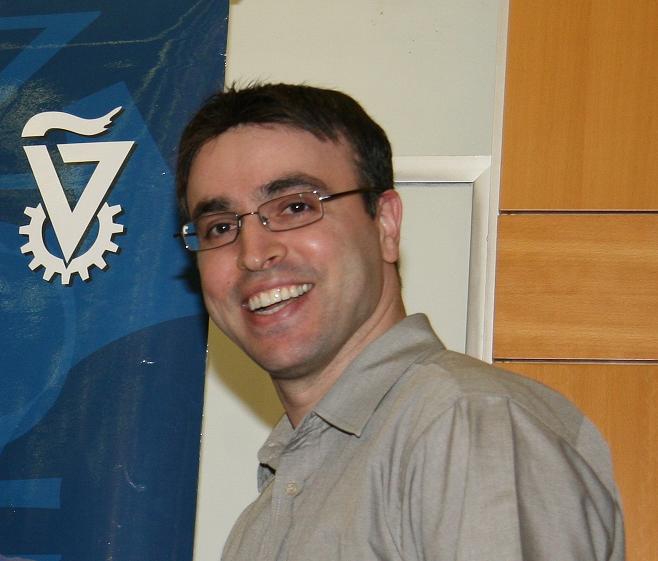Detecting kidney diseases through exhalation in their early stages - will make it possible to slow down their rate of progress

The electronic nose developed by Dr. Hussam Haik from the Faculty of Chemical Engineering and the Russell Berry Institute for Research in Nanotechnology at the Technion was originally intended for the early detection of cancer. On the side of its development progress, it turned out that it is also able to detect kidney diseases. This is reported by the scientific journal ACS NANO in its latest issue.
Early detection of kidney diseases is very important, since in the final stages of these diseases, the patients reach terminal kidney failure and need dialysis. In addition to the physical suffering for the patients and the cardiovascular complications, there is also great economic damage - in Israel alone, the treatment of each such patient costs NIS 300 per year. Early detection can delay dialysis treatment for many years, which means - quality of life for patients and huge financial savings.
The idea of trying the electronic nose also in kidney diseases came up in a conversation between Dr. Haik and Prof. Zeid Abbasi, in collaboration with Prof. Farid Nakhul from the Rappaport Faculty of Medicine at the Technion and the Rambam Medical Center in Haifa. The idea was based on the fact that one of the characteristics of patients with kidney diseases is a bad smell from the mouth (urea), which can be felt from a distance. Because of the characteristic smell, doctors use this sign to diagnose advanced chronic kidney failure patients.
As a starting point, Prof. Abbasi and his team of researchers created advanced kidney disease in rats, which are an ideal model for testing the feasibility study, and attached the electronic nose to the trachea of the rats. The researchers from the research groups of Dr. Haik and Prof. Abbasi found complete agreement between the results of the tests accepted for these diseases (mainly through blood and urine tests) and the results given by the electronic nose that tested the rats' breaths. Moreover, the researchers found the pattern of the volatile substances that characterize kidney diseases. Until now, only two suspicious substances were known, while Dr. Haik and the Technion's team of researchers found forty additional substances. This way, the ability to identify the disease will be more accurate. 27 substances were discovered that are found only in rats with kidney disease and not in healthy rats. Of these, the Technion researchers located the five most important substances that will signal the development of kidney disease.
The discovery, which aroused great interest in the global medical community, was patented by the Technion researchers, as changes were made to the electronic nose for renal research.
The nose developed by Dr. Haik is intended, in the first stage, to smell and diagnose diseases. "The person will blow into the nose, which will be able to diagnose, with the help of nanometer-sized sensors, the type of disease and even determine what stage the disease is in," explains Dr. Haik. "The diagnosis can be made at a very early stage of the disease, even before it starts to progress. So the drug treatment and appropriate nutrition will be immediate and will slow down the disease while it is in the enemy. Even if the disease is detected in advanced stages, appropriate drug treatments can still significantly slow down its progress and save these patients from a certain gallop to end-stage chronic renal failure and the need for dialysis treatment with all that implies - as prevention of dangerous cardiovascular complications as well as physical and mental suffering and financial costs mighty In our research, we have already shown that it is possible to differentiate, with the help of the tiny sensors, between a healthy person and a sick one," he adds. "The challenge facing us now is to distinguish between the different types of kidney diseases, and the stages in which the disease is present."
Prof. Abbasi adds that "We have a long and tiring road ahead of us to achieve the desired goal and that is a very early diagnosis of the disease when it can still be treated and stopped. The development of selective sensors with high sensitivity to markers of kidney failure will allow not only the diagnosis of the disease but also the monitoring of the therapeutic response of these patients to drugs, lifestyle changes, etc.
Today, a large-scale clinical study is being carried out to detect kidney diseases using breath samples in collaboration with Prof. Farid Nakhul - director of the Ambulatory Nephrology Unit at the Rambam Medical Center. Using this breath test, the researchers hope to grade the stages of chronic kidney failure and thus provide early and effective treatment.
Dr. Haik researched and developed in the field of nanometer sensors and devices at the California Institute of Technology (CALTECH). Today he is the head of the laboratory for nanomaterials-based devices which leads, among other things, multidisciplinary studies to diagnose diseases with the help of artificial olfactory systems (electronic noses) based on nanosensors in a non-invasive way. Prof. Abbasi is a researcher in medical sciences focusing on the study of kidney diseases and hypertension at the Faculty of Medicine of the Technion and the Rambam Medical Center. Prof. Nachul focuses on research into kidney complications of diabetes and clinical research at the Technion's Faculty of Medicine on the mechanisms of hypertension formation and its treatment.

One response
Kudos to Dr. Hossam, who is leading a breakthrough in breath testing for sniffing kidney diseases.
As there is a breath test for Helicobacter. Easy and very useful test.
Now I know why my mother had a bad mouth. She suffered a lot from the smell and we didn't know it was because of the kidneys.
Indeed, the kidneys were the most damaged due to heart problems, and it might have been possible to prevent a rapid deterioration.
Good luck, for all the patients.